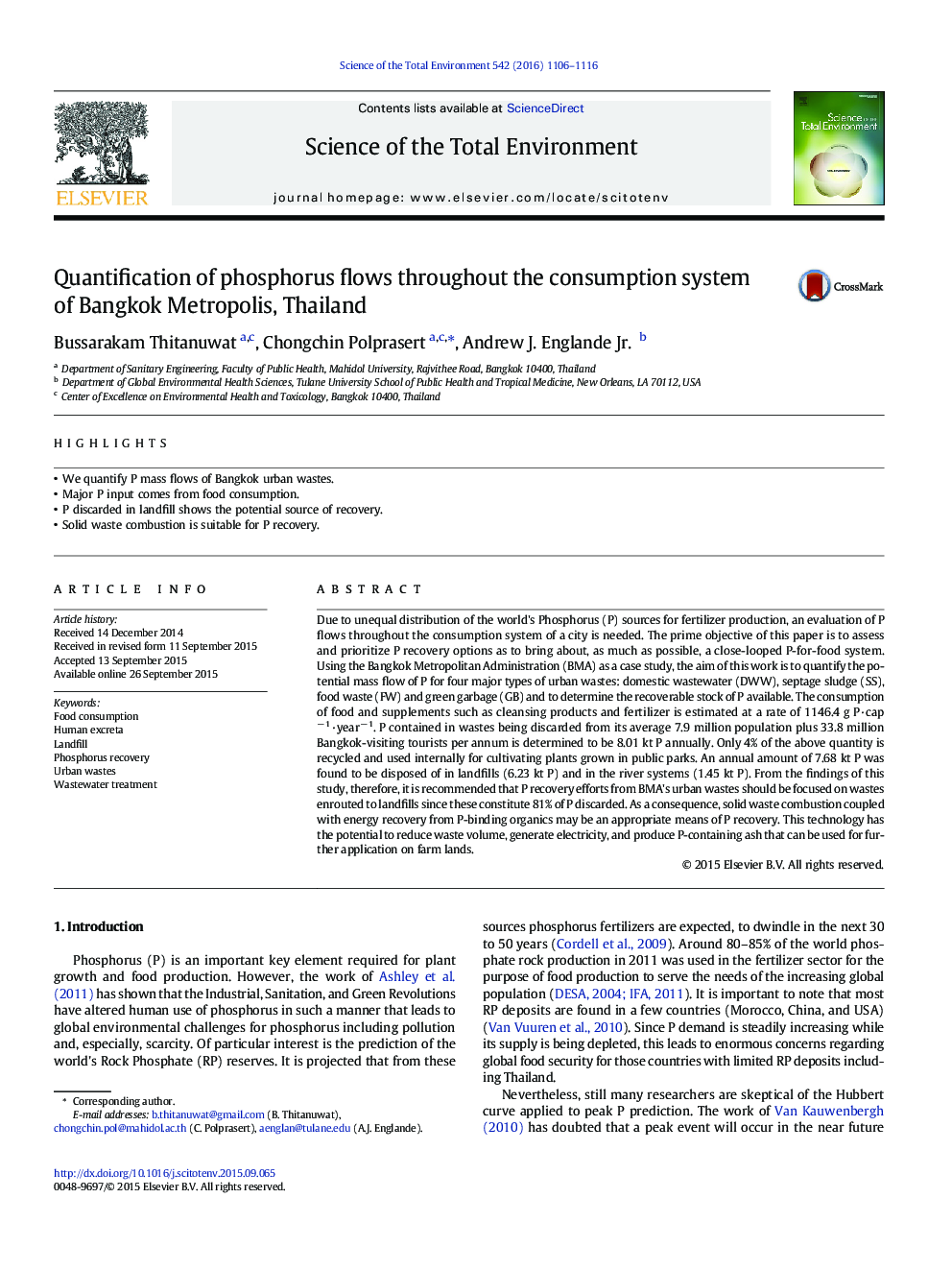| Article ID | Journal | Published Year | Pages | File Type |
|---|---|---|---|---|
| 6323792 | Science of The Total Environment | 2016 | 11 Pages |
Abstract
Due to unequal distribution of the world's Phosphorus (P) sources for fertilizer production, an evaluation of P flows throughout the consumption system of a city is needed. The prime objective of this paper is to assess and prioritize P recovery options as to bring about, as much as possible, a close-looped P-for-food system. Using the Bangkok Metropolitan Administration (BMA) as a case study, the aim of this work is to quantify the potential mass flow of P for four major types of urban wastes: domestic wastewater (DWW), septage sludge (SS), food waste (FW) and green garbage (GB) and to determine the recoverable stock of P available. The consumption of food and supplements such as cleansing products and fertilizer is estimated at a rate of 1146.4 g P·capâ 1·yearâ 1. P contained in wastes being discarded from its average 7.9 million population plus 33.8 million Bangkok-visiting tourists per annum is determined to be 8.01 kt P annually. Only 4% of the above quantity is recycled and used internally for cultivating plants grown in public parks. An annual amount of 7.68 kt P was found to be disposed of in landfills (6.23 kt P) and in the river systems (1.45 kt P). From the findings of this study, therefore, it is recommended that P recovery efforts from BMA's urban wastes should be focused on wastes enrouted to landfills since these constitute 81% of P discarded. As a consequence, solid waste combustion coupled with energy recovery from P-binding organics may be an appropriate means of P recovery. This technology has the potential to reduce waste volume, generate electricity, and produce P-containing ash that can be used for further application on farm lands.
Related Topics
Life Sciences
Environmental Science
Environmental Chemistry
Authors
Bussarakam Thitanuwat, Chongchin Polprasert, Andrew J. Jr.,
